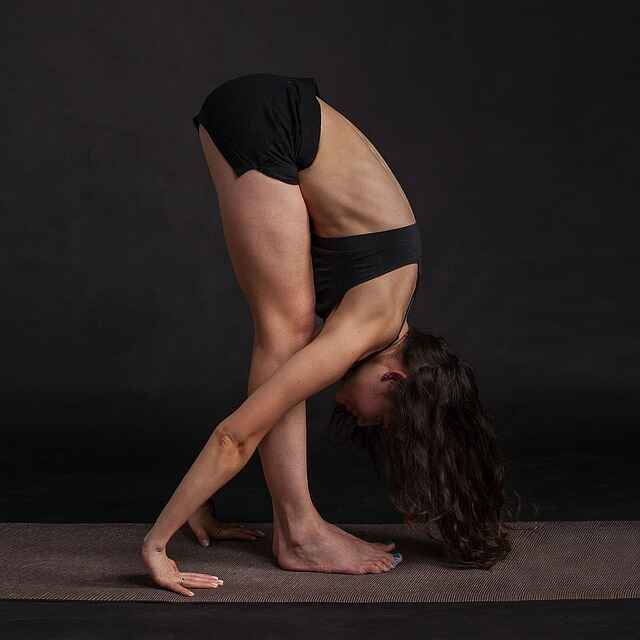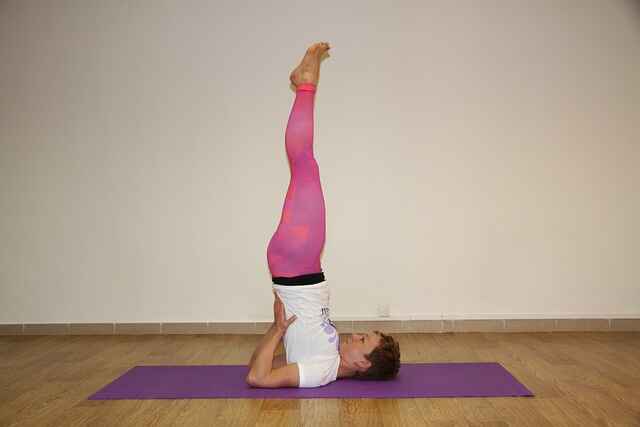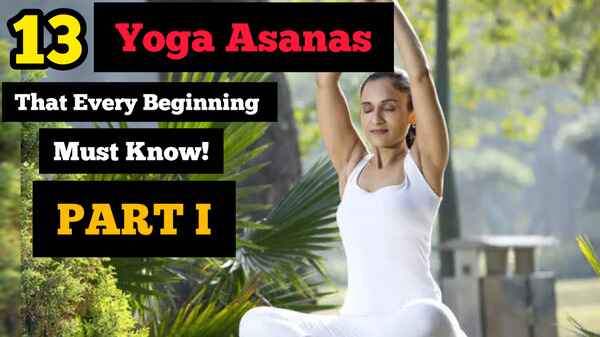Yoga is an ancient practice that offers numerous physical and mental benefits. Whether you’re looking to increase flexibility, reduce stress or improve overall well-being, yoga can be a transformative journey. As a beginner, it is crucial to start with the right foundation and learn the fundamental asanas (poses) that lay the groundwork for a successful yoga practice.
Let us explore 13 essential yoga asanas that every beginner must know. Each pose will be explained in detail, providing step-by-step instructions to ensure a safe and effective practice. (Source)
Also, Read 10 Science-Proven Health Benefits of Yoga!
1. Tadasana (Mountain Pose):
- – Stand with your feet hip-width apart.
- – Keep your spine straight, shoulders relaxed and arms at your sides.
- – Distribute your weight evenly on both feet.
- – Engage your core and breathe deeply.
2. Uttanasana (Standing Forward Bend):
- – From Tadasana, exhale and fold forward from your hips.
- – Allow your head and neck to relax.
- – Bend your knees slightly if needed by placing your hands on the floor or grasping your ankles.
- – Feel the stretch in your hamstrings and let gravity pull you deeper into the pose.

3. Adho Mukha Svanasana (Downward-Facing Dog):
- – Start on all fours with your hands slightly forward of your shoulders.
- – Tuck your toes, lift your knees off the mat, and straighten your legs.
- – Press your palms into the mat, lengthen your spine, and lift your sitting bones towards the ceiling.
- – Keep your heels reaching towards the floor and breathe deeply.
4. Phalakasana (Plank Pose):
- – Begin in a push-up position with your hands directly under your shoulders.
- – Engage your core, legs, and glutes to create a straight line from head to heels.
- – Avoid sagging or lifting your hips too high.
- – Hold the pose, breathing steadily for a few breaths.
5. Bhujangasana (Cobra Pose):
- – Lie on your stomach with your legs extended and the tops of your feet pressing into the mat.
- – Place your palms on the mat next to your ribcage, elbows bent.
- – Inhale, press into your hands and lift your chest off the mat.
- – Keep your shoulders relaxed and gaze forward.
6. Balasana (Child’s Pose):
- – Sit on your heels and gently lower your forehead to the mat.
- – Extend your arms forward or alongside your body, palms facing up.
- – Relax your shoulders, and surrender into the pose.
- – Breathe deeply and let go of any tension.
7. Virabhadrasana I (Warrior I Pose):
- – Step your right foot forward into a lunge, aligning your right knee over your ankle.
- – Pivot your left foot slightly inwards, grounding the outer edge.
- – Inhale and raise your arms overhead, palms facing each other.
- – Square your hips and gaze forward.
8. Virabhadrasana II (Warrior II Pose):
- – From Warrior, I, open your hips and extend your arms out to the sides, parallel to the floor.
- – Turn your head to gaze over your right fingertips.
- – Ensure your right knee is still aligned with your ankle.
- – Keep your shoulders relaxed and breathe deeply.
Also, Read 10 Breathing Exercises For a Healthy Body & Stress-Free Mind
9. Trikonasana (Triangle Pose):
- – Step your feet wide apart, with your right foot facing forward and your left foot turned slightly inwards.
- – Extend your arms to the sides, parallel to the floor.
- – Hinge at the waist and reach your right hand towards your right foot, placing it on your shin, ankle, or the floor.
- – Extend your left arm straight up, creating a straight line from fingertips to fingertips.
10. Setu Bandhasana (Bridge Pose):
- – Lie on your back with your knees bent, feet hip-width apart, and flat on the floor.
- – Press your feet into the mat, engaging your glutes and lifting your hips.
- – Interlace your fingers underneath your back and roll your shoulders underneath you.
- – Hold the pose, breathing deeply and feeling the opening in your chest and hip flexors.
11. Salamba Sarvangasana (Supported Shoulder Stand):
- – Lie on your back and lift your legs, bringing them overhead.
- – Place your hands on your lower back for support.
- – Lift your hips off the floor, supporting your lower body with your hands and elbows.
- – Keep your legs extended and engage your core.

12. Paschimottanasana (Seated Forward Bend):
- – Sit on the floor with your legs extended in front of you.
- – Inhale and reach your arms overhead, lengthening your spine.
- – Exhale and fold forward from your hips, reaching for your feet.
- – Relax your head, neck, and shoulders, allowing gravity to deepen the stretch.
13. Savasana (Corpse Pose):
- – Lie on your back with your arms at your sides and palms facing up.
- – Close your eyes and let your body fully relax.
- – Focus on your breath and release any tension or thoughts.
- – Stay in this pose for a few minutes, allowing the benefits of your practice to integrate.
By practicing these 13 foundational yoga asanas, you will establish a strong base for further exploration and growth in your yoga practice!





